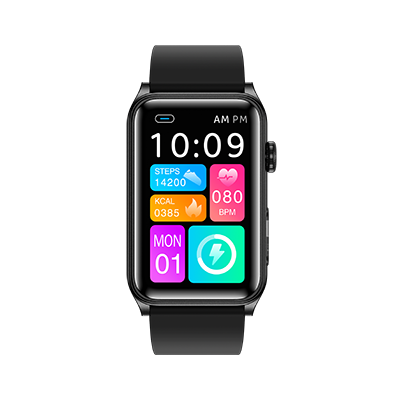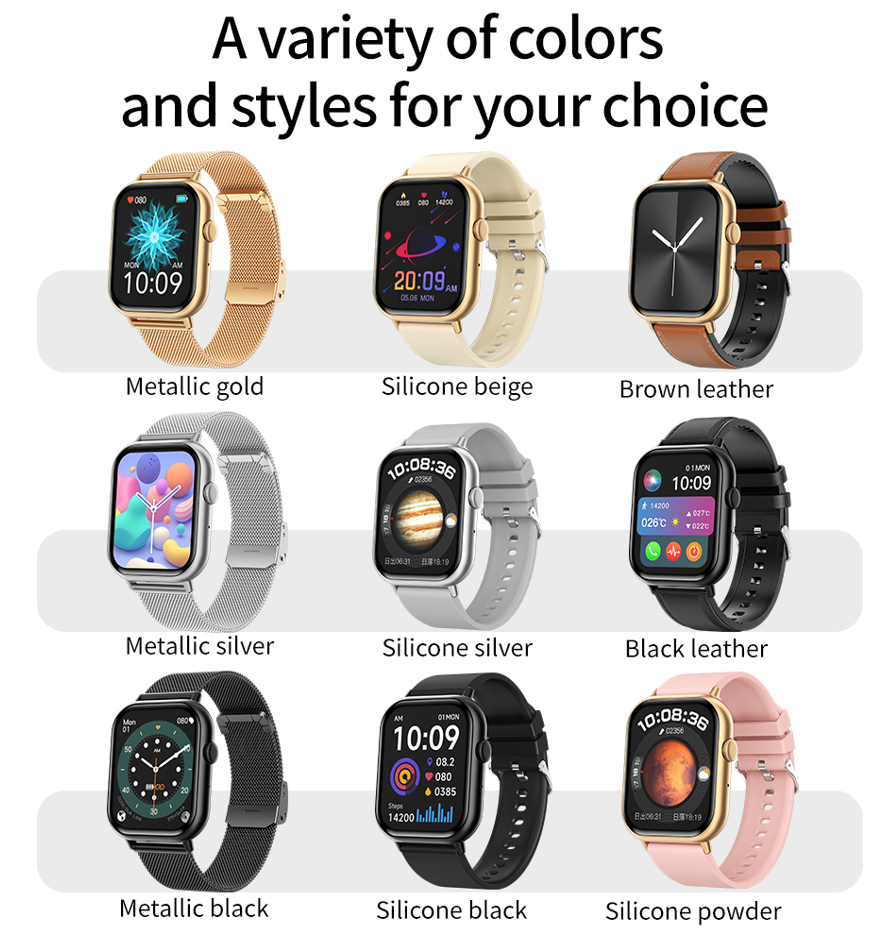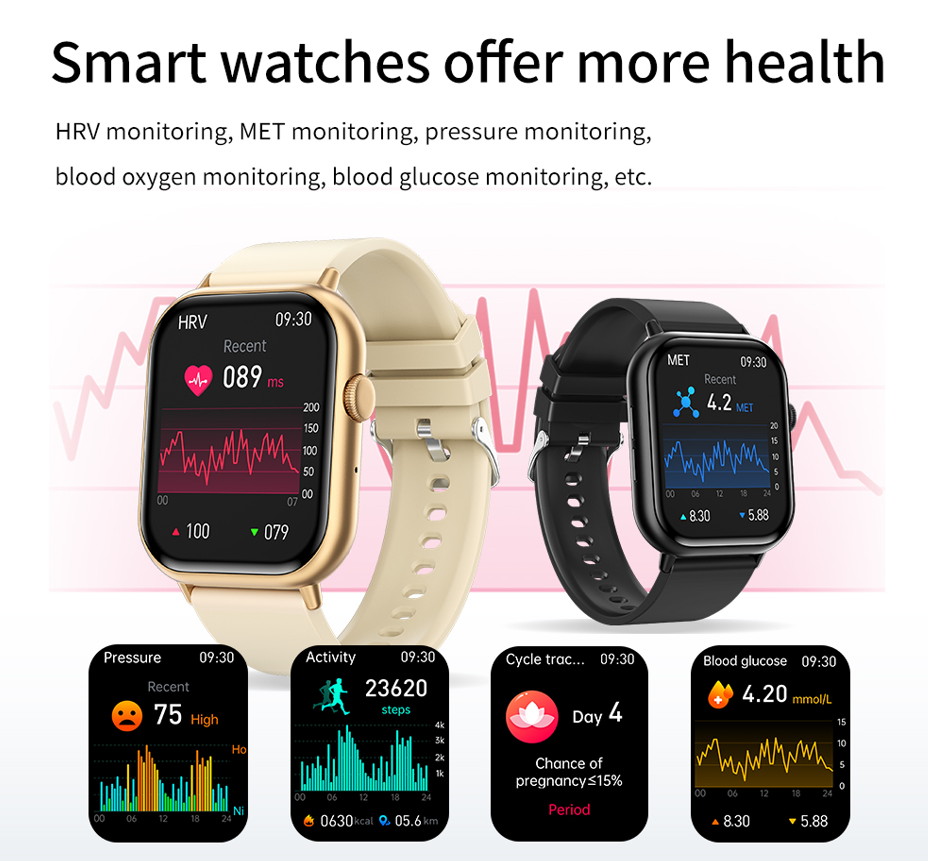In 2025, the Chinese smartwatch market witnessed a "boom year" in its development history, presenting an unprecedented growth trend. This explosive growth is not accidental but an inevitable result of the resonance of policy dividends, the upgrading of consumer demand and the continuous iteration of technology. The market has not only achieved a leapfrog growth in sales volume, but also undergone profound changes in its internal structure, competitive landscape and product form. Smartwatches are rapidly evolving from simple "sports accessories" or "extensions of mobile phones" to personal "health infrastructure", and are making solid progress towards medical-grade applications.

I.Dual wheel drive of policy and demand, significant optimization of market size and structure
The explosion of the Chinese smartwatch market in 2025 is primarily due to strong policy stimulus. The purchase subsidy policy launched at the national level, which provides consumers who purchase smartwatches with a 15% national subsidy (with a maximum subsidy amount of 500 yuan per product), has directly ignited consumer enthusiasm. The precise implementation of subsidy policies has effectively lowered the consumption threshold for mid to high end products, greatly stimulating the release of demand in the mainstream price range. Its significant achievements are reflected in the changes in price structure: products in the price range of 2000-2999 yuan, which already had strong competitiveness, have seen their sales proportion soar to 28.4% under policy stimulus, becoming the core engine driving overall market growth. This not only reflects the strong demand of consumers for high-quality smartwatches, but also indicates the positive role of policy guidance in optimizing market supply and promoting consumption upgrading.
On the demand side, the continuous strengthening of national health management awareness in the post pandemic era has become the fundamental driving force for the growth of the smartwatch market. Consumers are no longer satisfied with smartwatches only having basic exercise monitoring functions such as step counting and heart rate, but have an urgent need for more comprehensive, accurate, and predictive health management solutions. Leading brands such as Huawei and Apple have keenly captured this trend by integrating medical grade blood pressure monitoring (such as the dynamic blood pressure monitoring algorithm used in the Huawei Watch Fit series) and cutting-edge non-invasive blood glucose detection technology into their flagship products. They have taken the lead in elevating their product positioning from "sports accessories" to a strategic level of "health infrastructure". The significant increase in the value of this product has greatly expanded the application scenarios and user stickiness of smartwatches. Market data fully confirms this: from January to July 2025, the sales of adult smartwatches have reached 8.297 million units, with a staggering growth rate of 58.1% compared to the same period last year. In terms of brand competition, Huawei leads the market with a market share of 33.7%, thanks to its profound accumulation in health monitoring technology and strong insights into the local market; Apple, relying on the strong stickiness of its iOS ecosystem and the high-end positioning of its products, closely follows with a market share of 28.7%, forming the first tier of the market and leading the direction of industry development.
II. Competitive Landscape: Coexistence of Dominant Leaders and Differentiated New Entrants
The current competitive landscape of China's smartwatch market is characterized by a clear duality of "dominant players leading the market while emerging forces break through via differentiation." On one hand, market concentration continues to rise, with resources and market share increasingly consolidating among leading enterprises that possess advantages in technology, brand recognition, and ecosystem integration. Data shows that the top six mainstream manufacturers—such as Huawei and Apple—collectively hold a dominant 81.7% market share, establishing strong market barriers. For new entrants, direct competition with these giants in the general-purpose market presents significant challenges.

While reinforcing their existing strengths, leading brands are simultaneously pursuing a dual strategy of market penetration into mid-tier segments and fortifying their high-end technological moats. Huawei, for example, has successfully implemented its "technology downshift" strategy by equipping its mid-range models priced between RMB 500 and 999 with core features previously reserved for premium devices—such as AMOLED displays and accurate blood oxygen monitoring. This move has dramatically enhanced the value proposition and competitiveness of products in this price range, directly contributing to a 13.2 percentage point increase in market share for this segment and further solidifying Huawei’s leadership position.
Apple, on the other hand, continues to strengthen its dominance in the premium segment. The latest Watch Series 11, with its integrated 5G cellular connectivity, not only improves device independence and seamless connectivity but also establishes a new technological benchmark in the high-end market, reinforcing its appeal to premium consumer segments.
On the other side, emerging brands are not retreating in the face of pressure from industry leaders. Instead, they are actively seeking niche markets through differentiation. Brands such as Dido and Bopi are avoiding head-to-head competition with giants in terms of overall performance and ecosystem integration. Instead, they are focusing on specific health needs of targeted user groups—particularly middle-aged and elderly consumers, as well as the growing population managing sub-health conditions. By offering innovative, health-focused solutions, these brands have carved out viable market niches. For instance, some have developed air-bladder-based blood pressure monitoring technology to improve measurement accuracy, while others are pioneering non-invasive, needle-free glucose monitoring. These specialized features precisely address the demand for continuous tracking of key health indicators, enabling these new players to achieve localized breakthroughs amidst fierce competition, injecting fresh vitality into the market and expanding consumer choice.
III. Technological Iteration: From Feature Aggregation to Medical-Grade Certification, Leading Consumption Upgrading
The core internal drivers for the growth and value enhancement of the smartwatch market in 2025 are undoubtedly the continuous iteration and innovation of technology. Currently, the health monitoring functions of smartwatches are undergoing a critical transition from simple feature aggregation towards clinical-grade precision and medical-grade applications. A significant milestone occurred starting in 2024, when China's National Health Commission began approving select technologically mature smart wearable wrist devices for Class II Medical Device Certification. This signifies that physiological data such as blood pressure and electrocardiogram (ECG) monitored by these devices have been recognized as possessing clinical reference value. This policy breakthrough has not only significantly elevated the professionalism and credibility of smartwatches in the health management domain but has also paved the way for their future integration into the medical and health system to undertake more public health functions

In terms of specific technological applications, hardware innovation and algorithm optimization are advancing in tandem to jointly propel the improvement of health monitoring accuracy. For instance, products like the Asus VivoWatch 6 have innovatively adopted miniature air pump technology, combined with precision pressure sensors, to achieve measurement accuracy approaching that of traditional electronic blood pressure monitors. This enables users to obtain reliable blood pressure data during daily life. Concurrently, the application of Artificial Intelligence (AI) technology in health management is deepening. Emerging brands like Miao Doctor are launching new products that explore the construction of big data-driven AI health warning systems. By tracking, analyzing, and modeling users' long-term physiological data, these systems attempt to provide early prediction and warnings for potential risks such as cardiovascular diseases, achieving a leap from "passive monitoring" to "active prevention."
This comprehensive technological upgrade has directly driven an increase in the average market price (ASP) of products. In 2024, the ASP reached 1,376 RMB (projected to rise further in 2025), clearly demonstrating the trend of consumption upgrading. Consumers are willing to pay a premium for smartwatches featuring higher-precision health monitoring capabilities, superior materials and craftsmanship, and enhanced user experiences. This, in turn, incentivizes manufacturers to continuously increase R&D investment, forming a virtuous cycle: Technological Innovation -> Product Upgrade -> Increased Consumer Willingness to Pay -> Market Growth -> Reinvestment in R&D. This cycle propels the entire smartwatch industry towards a higher position in the value chain.
The Chinese smartwatch market in 2025 is at a dynamic and transformative juncture. Driven by the combined forces of policy, demand, and technology, the market scale continues to expand, product forms constantly evolve, and the competitive landscape dynamically adjusts. Looking ahead, with the further proliferation of medical-grade functions, the deep application of AI algorithms, and tighter integration within the broader health and wellness ecosystem, smartwatches are poised to play an increasingly vital role in personal health management and even the overall medical health system. Their market potential is expected to be further unlocked.